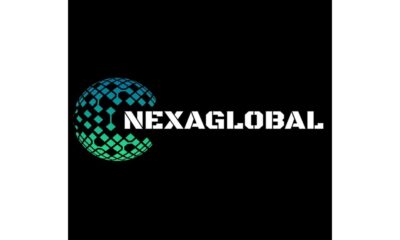Cryptocurrency
Is Investment in Ethereum a Smart Move?

Ethereum has quickly become one of the most promising cryptocurrency assets driving this disruption as blockchain technology seeks to transform markets, decentralize power, and enable greater transparency.
Ethereum adoption is accelerating at an impressive rate, powering a variety of cryptocurrency projects, non-fungible token marketplaces, decentralized autonomous organizations, and decentralized finance applications.
Like any speculative investment, there is a significant chance of profit, but there are also possible risks. Ethereum’s long-term investment potential necessitates in-depth research beyond simple price changes. Examining the practical use cases and fundamental utility that support sustainable value is part of this process. In addition, the assessment of Ethereum’s strategic options for sale becomes essential when determining the long-term investment viability of the platform.
What Distinguishes Ethereum from Other Cryptocurrencies?
Whereas Bitcoin is primarily focused on peer-to-peer digital payments and value propositions, Ethereum operates as a more multifaceted asset that powers a whole decentralized software ecosystem.
A large blockchain platform for creating and executing decentralized applications (dapps) is powered by ether tokens. Ethereum’s Turing-complete programming language is used by programmers to create self-executing smart contracts.
Deployed on Ethereum’s blockchain, these self-governing code segments allow dapp functionality to function precisely as intended, free from censorship or manipulation risks.
Digital assets and collectibles (NFTs), identity management, insurance, supply chain tracking, gaming, metaverse worlds, and finance (DeFi) are just a few of the industries that use decentralized apps.
Ethereum opens up the potential to completely rewire economic incentives and innovation potential in a wide range of important industries. Both multinational corporations and tenacious startups recognize these opportunities.
The Future Possibilities of Ethereum
Even though Ethereum is currently the most popular smart contract blockchain network, new and innovative developments aim to increase scalability, speed, and efficiency even further.
Upgrades such as layer 2 solutions, plasma chains, sharding, proof-of-stake consensus, and state channels may enable the Ethereum blockchain to process more than 100,000 transactions per second at a very low cost.
This positions the network in a good position to handle billions of users and enable trillions of dollars worth of long-term value transfers between web 3.0 apps developed on Ethereum, non-fungible token marketplaces (NFTs), decentralized finance (DeFi), and metaverse domains.
The development and active usage of decentralized apps on Ethereum by both businesses and consumers will contribute to the Ether cryptocurrency’s inherent value. The prospects for long-term investments are very promising.
Important Factors Affecting Ethereum’s Growth Path
It appears that Ethereum adoption will continue to grow quickly for several reasons:
- Developer Mindshare
According to Electric Capital, Ethereum has over 4 times more active developers each month than any other blockchain project, making it the leader in developer activity in the cryptocurrency space. Building is still happening at an accelerated rate.
- Enterprise Interest
To better serve their customers, major companies like JPMorgan, Mastercard, UBS, Microsoft, Intel, Amazon, and others keep introducing Ethereum-based platforms and projects.
- Consumer Apps
The availability of metaverse worlds, NFT digital collectibles, and DeFi protocols that enable yield earning have made Web 3.0 Ethereum dapps more approachable for regular users.
- Institutional Investment
Accredited investors can gain exposure to major cryptocurrency investment products like CME Ether futures, Canadian ETH ETFs, and Grayscale Ethereum Trust, which collectively bring billions of dollars onto Ethereum’s blockchain every year. The rising acceptance of cross-chain transactions, like converting ARB to ETH, also serves as evidence of the growing interdependence of the cryptocurrency ecosystem.
- Upcoming Tech Upgrades
Ethereum is currently hindered by scalability issues, but fundamental improvements like sharding and Proof-of-Stake consensus to significantly reduce transaction costs and speeds are still being worked on by the best programmers and cryptographers in the world.
The system seems poised to witness ballooning value capture as core protocol development and dapp innovation methodically address present constraints while granting developers and users greater access to create and use Ethereum apps.
- Possible Negative Risks to Take Into Account
Of course, cautious cryptocurrency investors need to consider the risks associated with an early-stage asset like Ether, including both short-term volatility and longer-term uncertainty. It’s essential to keep an eye on changes to taxation, regulations, and policies surrounding cryptocurrencies as technology advances.
Although the rate of improvements to core protocols, such as the Merge to Proof-of-Stake, is still accelerating, it makes sense to be cautious when it comes to rollout schedules because there is potential for additional delays or security problems.
However, in comparison to earlier blockchain iterations, Ethereum now boasts a significant track record of resilience, security, and antifragility. As technology advances, the global grassroots community of builders and users keeps growing and maturing.
Ethereum is currently the clear market leader in decentralized app platforms, but competitive Layer 1 blockchain alternatives like Solana (SOL) continue to pose a threat to its share. The primary difference between SOL and ETH is its significantly faster transaction speeds; Solana has already demonstrated that it can process over 50,000 transactions per second (TPS), while Ethereum can only process 15 TPS currently.
Scalability and quick innovation cycles are Solana’s top priorities to keep its raw TPS advantage over ETH. However, compared to Ethereum, the trade-offs include far fewer active applications or users, higher network instability risks, and currently much lower security thresholds. However, there is still time for SOL to steal ETH’s liquidity and market share as long as Ethereum’s congestion lasts and solutions aren’t found to reduce costs and latency.
The competition pits the patient focus of Ethereum on security, stability, and incremental updates against Solana’s voracious appetite for quick composability and cheap cost. If handled carefully, the enormous upside from SOL’s still-emerging $35 billion market cap compared to ETH’s enormous $250 billion valuation may justify holding some Solana alongside core Ethereum holdings for investors who are bullish on maintaining raw SOL to ETH speed advantages indefinitely.
Predictions for Ethereum Prices and the Market Outlook
Prominent cryptocurrency analysts and institutional investors from Ark Invest, Bloomberg, Invesco, Galaxy Digital, and other firms are overwhelmingly optimistic about Ethereum’s potential for price growth over the next five to ten years, based on the cryptocurrency’s growth trajectory.
According to Mike Novogratz of Galaxy Digital, as financialization picks up speed and Ethereum-based platforms like DeFi see an escape velocity in usage, $7,500+ per ETH should emerge by 2025.
According to a Bloomberg analyst, Ethereum’s market capitalization could eventually reach $20–30 trillion, or $14,000–$20,000 per ETH.
Based on predictions of massive innovation and growth in DeFi, NFTs, DAOs, stablecoins, and Web 3.0 platforms over the next ten years, mostly built on Ethereum-based programming, ARK Invest analysts forecast Ethereum to hit $20,000+ eventually.
Clearly, even from current levels, industry experts anticipate an upside of 10-100x or more for Ethereum prices over the next ten years. This necessitates a gradual rise in the market capitalization of digital assets over $100 trillion.
Conclusion: Bull Case Is Stronger Than Before
Even though they can experience tremendous volatility, cryptocurrencies, and early-stage computing platforms have enormous potential for wealth creation. This is consistent with the history of other revolutionary technologies, such as the internet, which grew over decades.
Investors who possess a strong sense of vision, conduct thorough utility analysis, and have faith in decentralized networks to disrupt established business models are well-positioned to yield significant returns over extended periods.
It is imperative to assess a personal risk tolerance regarding the complexities of cryptocurrency transparently before making any investment.
But in the long run, Ethereum seems poised to emerge as the definitive Web 3 blockchain settlement layer and thriving decentralized application ecosystem, based on factors like accelerating developer/enterprise traction, demographic/generational trends embracing digital assets, the maturing of global institutional infrastructure, and the mainstream awakening to the possibilities of money/power decentralization.
Believers in decentralized networks upending business paradigms have a very good chance of creating wealth on the scale of other revolutionary general-purpose technologies like computers, the internet, and mobile computing over the next decade through Ether and public blockchain innovations within the high-risk, high-reward realm of crypto assets.
-

 Business3 weeks ago
Business3 weeks agoPrakash and Kamal Hinduja: Driving Social and Environmental Change
-
Education4 weeks ago
Fred DuVal: University Leadership as a Critical Resource for Climate Change Research and Life-Saving Solutions
-

 Startup1 day ago
Startup1 day agoSmall Business Month Encourages Entrepreneurs to Take Stock and Scale Up with Actionable Marketing Strategies
-

 Cryptocurrency4 weeks ago
Cryptocurrency4 weeks agoDesigned For The Masses: How Akasha (AK1111) Is Unlocking Crypto For The Next Billion Users
-

 Health3 weeks ago
Health3 weeks agoThe Hinduja Brothers Commitment to Global Health: Empowering Communities Across Borders
-

 Cryptocurrency4 weeks ago
Cryptocurrency4 weeks agoNexaglobal & Future World Token (FWT): Could This Be the Next Big Crypto Investment of 2025?
-

 Startup2 weeks ago
Startup2 weeks agoCost-Saving Strategies Every Small Business Owner Should Know to Boost Efficiency
-

 Startup3 weeks ago
Startup3 weeks agoMatthew Denegre on the Art of Deal Sourcing: Finding the Right Investment Opportunities

















